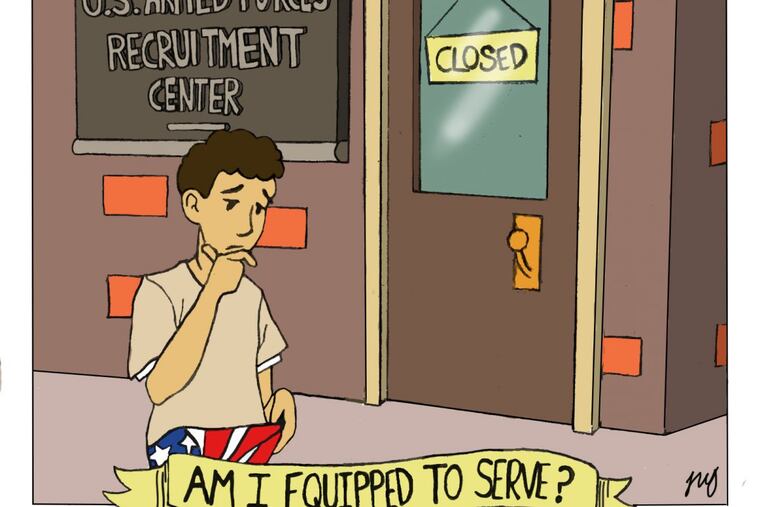At Temple, political cartoonists in the making
The 60 students came up with interesting images and funny gags with some serviceable artwork to show what they felt about national, Temple, and even Philadelphia politics.

When I asked the 30 or so students in a Temple University communications class a few years back how many knew what an editorial cartoon was, maybe six or seven hands timidly wavered upward. The kids should have looked around to their fellow students.
This year, when Temple's College of Liberal Arts held a cartoon contest, it got an astonishing 60 entries. And some of the ideas were definitely worth stealing.
It was heartening that students who don't regularly see political cartoons almost instinctively know what they are. They came up with interesting images and funny gags with some serviceable artwork to show what they felt about national, Temple, and even Philadelphia politics. Though there were no content directions, most of the entries were left-leaning.
Traditional editorial cartoons began and grew with the growth of newspapers. As newspapers continue to contract, so too, do the number and viewership of editorial cartoons. There were somewhere around 160 or more cartoonists when I started looking for jobs in the 1980s. Now there are around 50 full time.
Where people once followed cartoonists for political humor, they now follow Saturday Night Live, Stephen Colbert, and Samantha Bee. Those folks are all great but hard to hang on your refrigerator. And, they will never skewer the hometown hijinks of local politicians who need scrutiny as much as our national figures do.
The urge to make satirical art hasn't decreased. Online sites such as "The Nib" feature young cartoonists with more long-form styles. Pulitzer Prize winners Mark Fiore and Ann Telnaes, among others, have pioneered various kinds of animated cartoons that work online and, of course, on Facetwittergram-type sites. More will experiment with the genre.
Even if none of Temple's student cartoonists goes into the field full time, I look forward to seeing what their generation does with the craft. I will need something to keep me amused in my rocker at the old cartoonists' home.